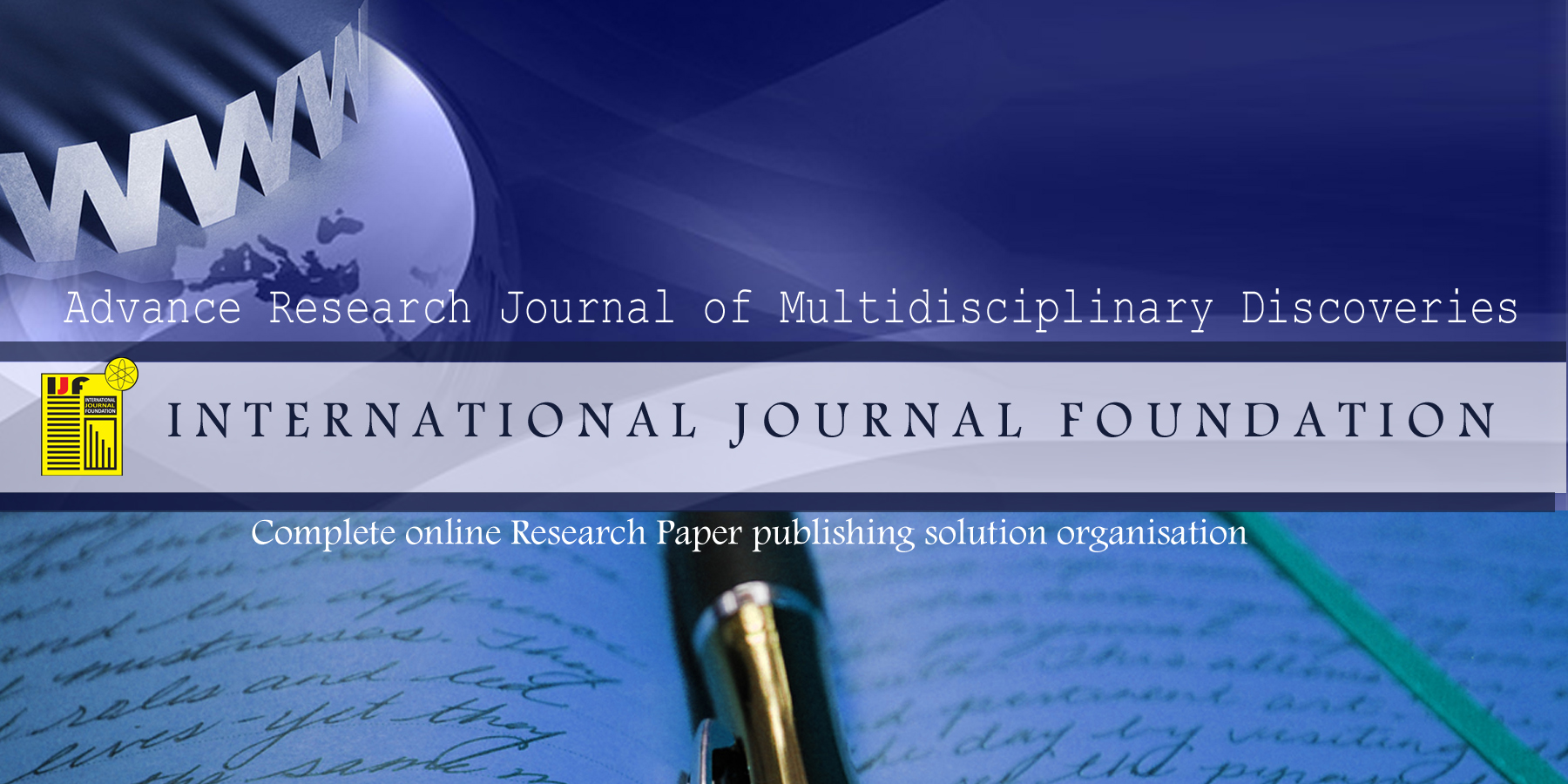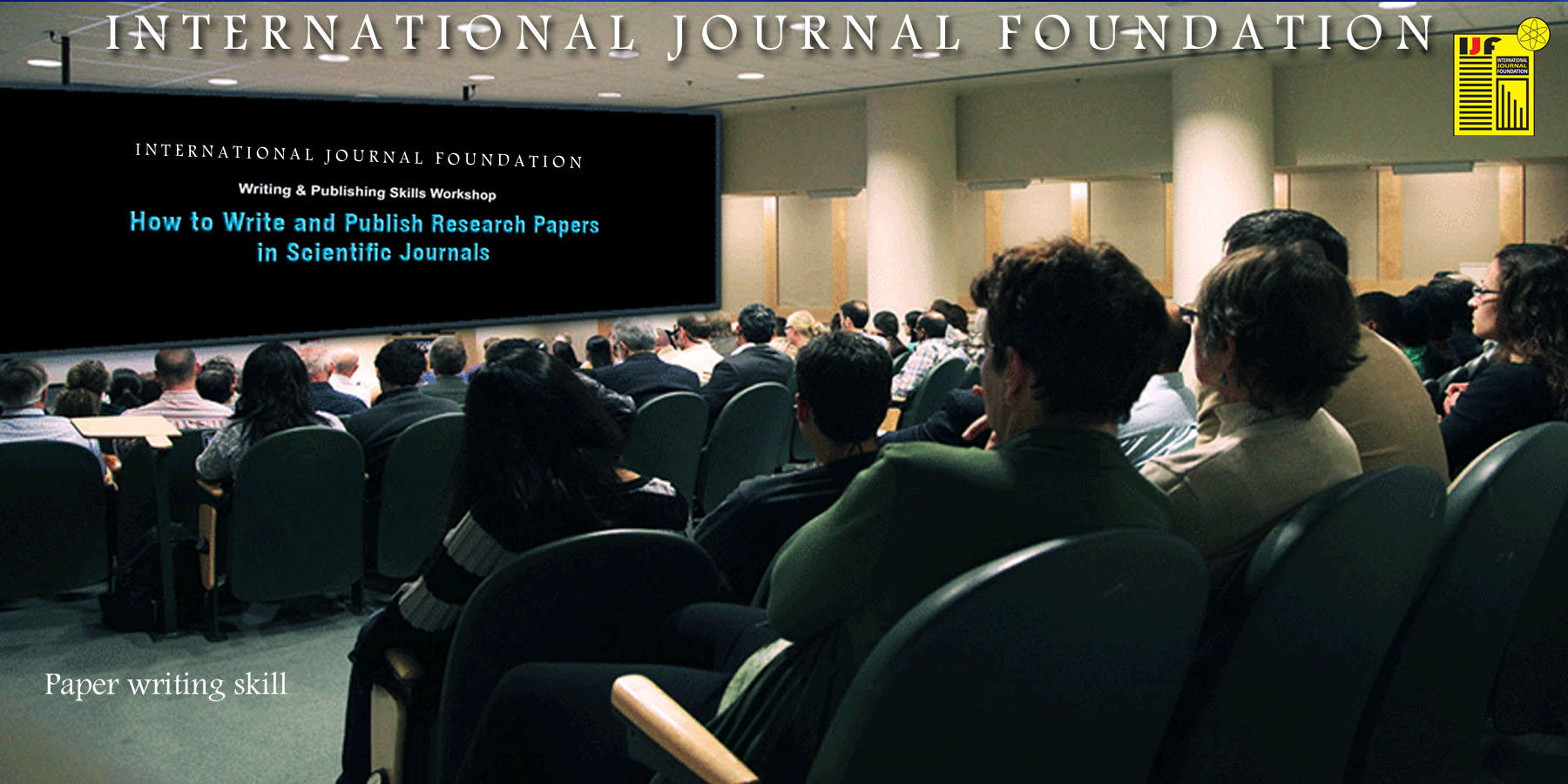2020
JULY 2020/ Vol.51.0/ Issue-I
CATEGORY : Research Topic on Entomology [ Original Research Article ]
| SL.No. | Detailed information of the published article |
| 1 | Manuscript Title : Public Knowledge, Attitude and Practices to wards Cutaneous Leishmaniasis and Sand Flies in Attoud, Aseer Region, kingdom of Saudi Arabia Author’s Name : Amna H.I.Babeker, 2Fatima E. M Elhadi*, 3Hasabelrasol F.A. Elhaj, 4Afaf R. Albargi, 5Atheer M. Assiri, 6Wejdan S. Alshehri Article Type : ORIGINAL RESEARCH ARTICLE Country from : Kingdom of Saudi Arabia (KSA) Date of Publication: 12-10-2020 Journal Name : Advance Research Journal of Multidisciplinary Discoveries [ ISSN : 2456-1045 ] Article Identification : Vol. 51.0/Issue-I/Chapter-I/Page – 01-07 [JULY-2020 EDITION ] Article Code : ENT-V51-I1-C1-JULY-2020 Status : Officially published Publisher : International Journal Foundation Download PDF : Full article (Pdf) Doi No : 10.5281/zenodo.4080370 ———————————————————————————————————————————– ABSTRACT: Background: Cutaneous leishmaniasis (CL) is a vector-borne disease transmitted by the bite of an infected sand fly. This disease is highly prevalent in Saudi Arabia. It aims to assess Knowledge, Attitude and Practices Related to Cutaneous Leishmaniasis and Sand Flies among 8th Female High school in Attoud, Aseer Region. click here Methodology: This study was conducted at 8th Female High school with sample size 210 participants by used Questionnaire to assess the Knowledge, Attitude and Practices of Cutaneous leishmaniasis. The data was analyzed by SPSS Version (22) for analysis and presented of data . Results: The vast majority of the respondents (94.76 %) were live in Attoud area, (43.8%) of respondent’s knowing about Cutaneous leishmaniasis. Nearly half of respondents (42.2%) were reported that Cutaneous leishmaniasis is presented with Skin infection (a cutaneous rash). (76.7%) of respondents stated the sand flies of insect transmitted Cutaneous leishmaniasis, but only 21% knew the vector of the disease of Cutaneous leishmaniasis. Only (24.8%) of respondents know about preventive measures. Regarding attitude, (34.8%) of respondent thoughts, insecticide are the best in avioding Cutaneous leishmaniasis followed by Insect repellents (27.6%) and few of them thoughts Sanitation (3.3%) .Nearly half of the respondents (42.4%) thought that insecticide were spray more than a year and (12.4%) of the respondents do not thought any things. Conclusions: In the study, insufficient knowledge of the students about Cutaneous leishmaniasis infection, vector, mode transmission and preventive measures of CL, also the attitude and practice of students like preventive measures of CL were found not satisfactory, and the study found the High education of parents lead to high knowledge of their kids of disease. Highpoints the needs for a health education and promotion to enhance the awareness of students about CL. which will improve inhabitants’ contribution in control program of CL in this area.KEYWORDS: Knowledge, Attitude, Practices, Cutaneous Leishmaniasis, Sand fly, Saudi Arabia.

|
CATEGORY : Research Topic on Earth Science [ Original Research Article ]
| SL.No. | Detailed information of the published article |
| 2 | Manuscript Title : Addressing the drinking Water Needs of hard to reach communities in rural and Peri-Urban areas of Sierra Leone – The spring box option Author’s Name : Mustapha Olajiday Thomas Article Type : ORIGINAL RESEARCH ARTICLE Country from : Sierra Leone Date of Publication: 12-10-2020 Journal Name : Advance Research Journal of Multidisciplinary Discoveries [ ISSN : 2456-1045 ] Article Identification : Vol. 51.0/Issue-I/Chapter-II/Page – 08-14 [JULY-2020 EDITION ] Article Code : ETS-V51-I1-C2-JULY-2020 Status : Officially published Publisher : International Journal Foundation Download PDF : Full article (Pdf) Doi No :10.5281/zenodo.4080380 —————————————————————————————————————————– ABSTRACT: Groundwater remains a viable option to surface water development if efforts are intensified to address the bacteriological quality which studies have shown has been compromised by high levels of faecal coliform bacteria found particularly in wells dug into the shallow aquifer. Evidences are emerging from recent studies which seem to suggest that the problem may be much more pervasive than expected. click here Springs appear to be much easier to manage if used for community water supply. In this study, the feasibility of spring sources in providing potable water for hard to reach communities in rural and peri-urban communities is assessed. Surface manifestations of groundwater were identified in 17 communities in five districts in Sierra Leone. The discharge of each spring was measured in the late dry season when flow was at its minimum. The potential of the spring sources in providing sustainable drinking water for the communities was assessed by comparing the per capita supply of the springs as against the per capita demand of the population. Population data for the target communities were obtained from the latest census data which were later validated on the ground with the local authorities. The study has revealed that 88% of the springs investigated are viable sources of drinking water, with per capita water supply meeting or exceeding per capita demand for a design period of 10 years. It is recommended that spring boxes are designed to capture and store as much water from the eyes of the springs. The water must of necessity be disinfected before use to destroy any pathogens that may have been present in the waters. The spring water option, it has been shown, provides a better alternative to unprotected dug wells, especially in rural settings where income levels are insufficient to meet the running costs of surface water development schemes.KEYWORDS: Spring water option; potable water; discharge; per capita water demand; per capita water supply,viable sources

|
CATEGORY : Research Topic on Mathematical Science [ Original Research Article ]
| SL.No. | Detailed information of the published article |
| 3 | Manuscript Title : Application to the Fuzzy Fractional Diffusion Equation by using Fuzzy Fractional Variational Perturbation Iteration Method. Author’s Name : 1 Mawia Osman ,1Zengtai Gong*,1,2Altyeb Mohammed Mustafa Article Type : ORIGINAL RESEARCH ARTICLE Country from : CHINA Date of Publication: 12-10-2020 Journal Name : Advance Research Journal of Multidisciplinary Discoveries [ ISSN : 2456-1045 ] Article Identification : Vol. 51.0/Issue-I/Chapter-III/Page – 15-26 [JULY-2020 EDITION ] Article Code : MTH-V51-I1-C3-JULY-2020 Status : Officially published Publisher : International Journal Foundation Download PDF : Full article (Pdf) Doi No : 10.5281/zenodo.4080622 —————————————————————————————————————————– ABSTRACT: In this article, we present the Fuzzy Fractional Variational Homotopy Perturbation Iteration Method (F-FVHPIM) is applied to solve the fuzzy fractional diffusion equation. The new method is investigated based on the strongly gH-differentiable and Riemann-Liouville gH-differentiability.click here Using this method, a fast affinity sequence can be obtained that tends to accurately solve the equation. The results show that FFVHPIM is a very effective, convenient, and accurate mathematical tool for solving the fuzzy fractional diffusion equation. Finally, three examples are used to illustrate the main results of this article.
KEYWORDS: Fuzzy numbers; Fuzzy-valued function; Riemann-Liouville gH-differentiability; FFVHPIM; Fuzzy fractional diffusion equation; Mittag-Leffler function |
N.B: Our publication process is going on. More paper will be added very shortly in this current issue…
(i) To Publish your paper in our upcoming issue send your article directly at article.ijf@gmail.com
![]()
![]()
![]()
![]()
![]()
















